A parquet board quickly won the trust of Russian buyers and is becoming increasingly popular thanks to an attractive and warm on the touch of a wooden surface, a fairly stable design, a rapid and inexpensive flooring.
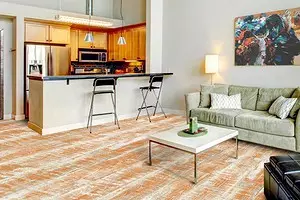
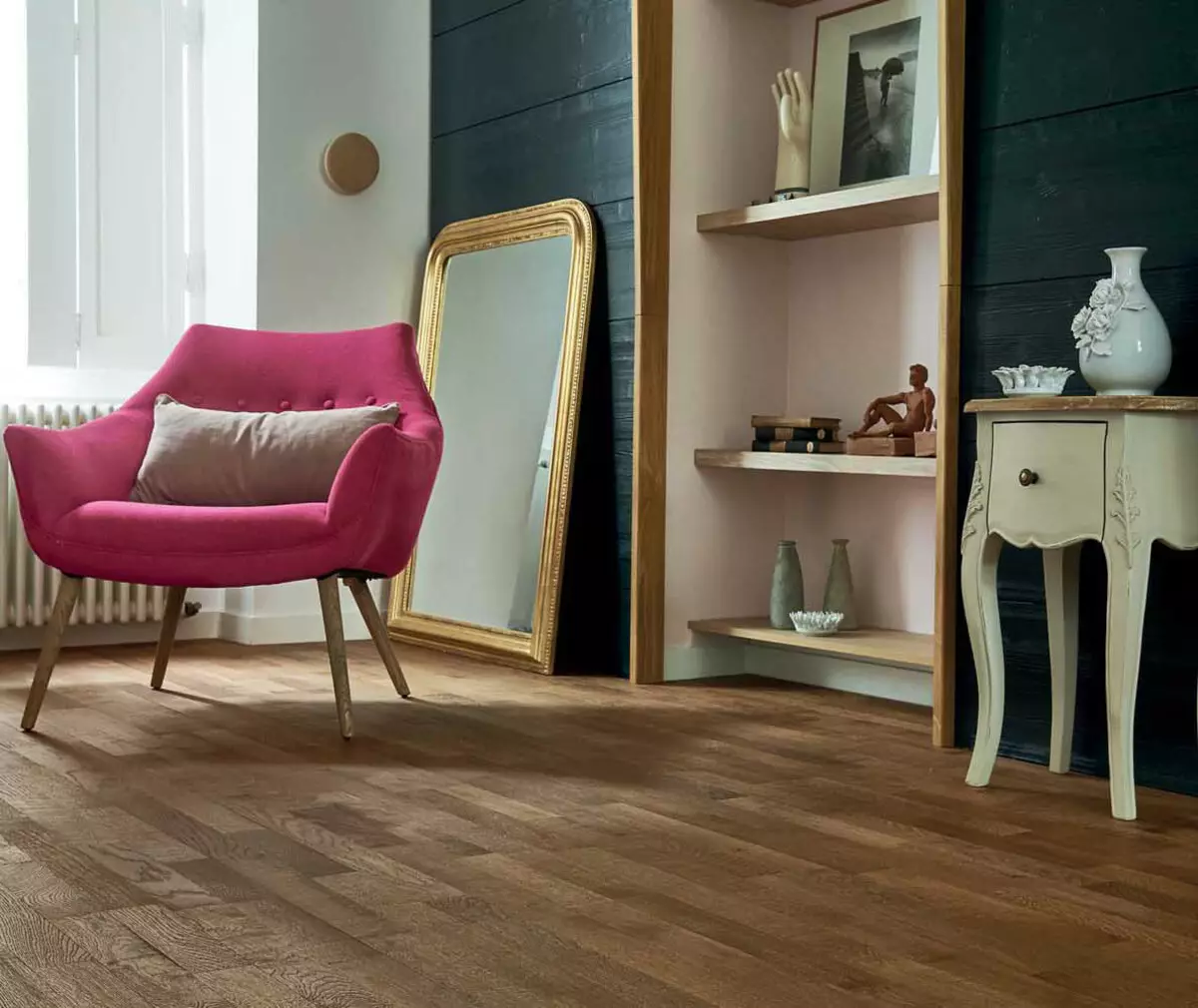
Photo: Panaget.
What premises are parquet board?
First we recall the size of parquet boards. This is a length of 2100-2250 mm, width 180-200 mm and a thickness of 13-15 mm. The minimum cost is 1 m. Floor - 1190 rubles., Maximum - about 10 thousand rubles. Optimal operating conditions for parquet board, experts consider 18-24 ° C and relative humidity 40-60%. With a higher moisture, wood is prone to swelling, which can cause damage to the coating, and at a lower one - to the drying, which often causes shrinking deformation of the elements.
The optimal conditions are supported using winter and air conditioning humidifiers with humidity reduction function - in summer. So reduce the natural movement of wood with changing external conditions, but not excluding it completely.
Before purchasing parquet boards, you will definitely ask the terms of the manufacturer's warranty. Most of them warranty does not apply to floors in rooms where it is impossible to maintain the necessary microclimate. A typical example is a seasonal residence country houses.
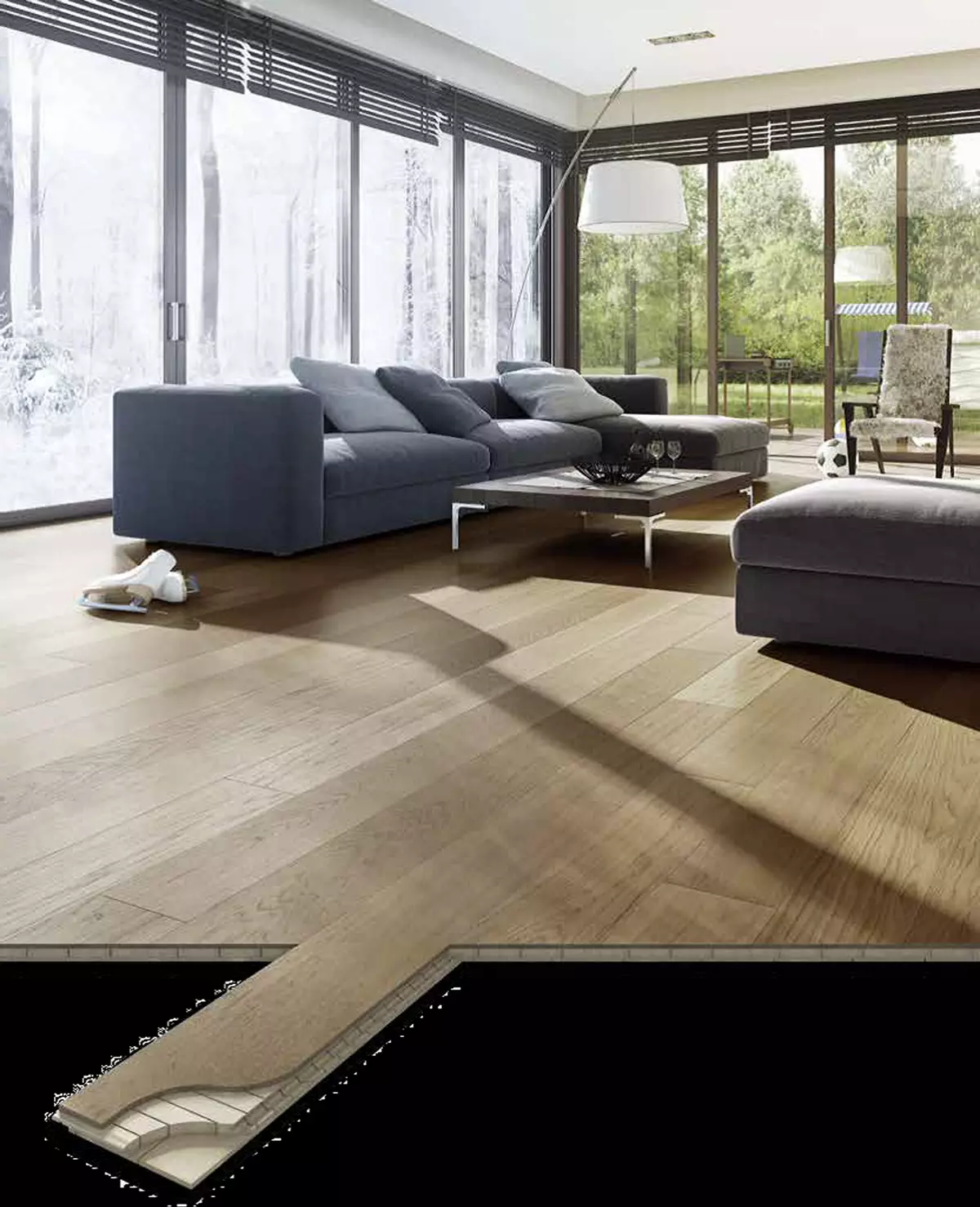
Paul from parquet boards is quite stable in warm rainy days when the air is very wet, and in winter, when it becomes dry due to working heating. Photo: Barlinek.
Is it worth paying attention to the wood of the top layer of the board?
The rock tree of the top layer of the boards, in addition to the shade and pattern of wood fibers, determines the solidity of the floor. Those who do not want thin-heeled shoes to leave noticeable traces on the boards, will have to abandon golden-brown, with pink and creamy floor shades from Cherry in favor of Canadian Clean or Eucalyptus.
Look at the hardware tables for the test of Brinell (this is a special industrial test for the stability of the selected breed to the external load). In them, this indicator (HBW) is given for different wood breeds, and the higher it is higher, it will be the floor. If the HBW cherries are 3.2-3.4, then oak, which can be considered a golden middle, - 3.7-3.9, in Canadian Clean - 4.8, and Eucalyptus (Yarra) - 5.3 It is believed that wood with an HBW indicator below 3.5 is too soft for floor covering.
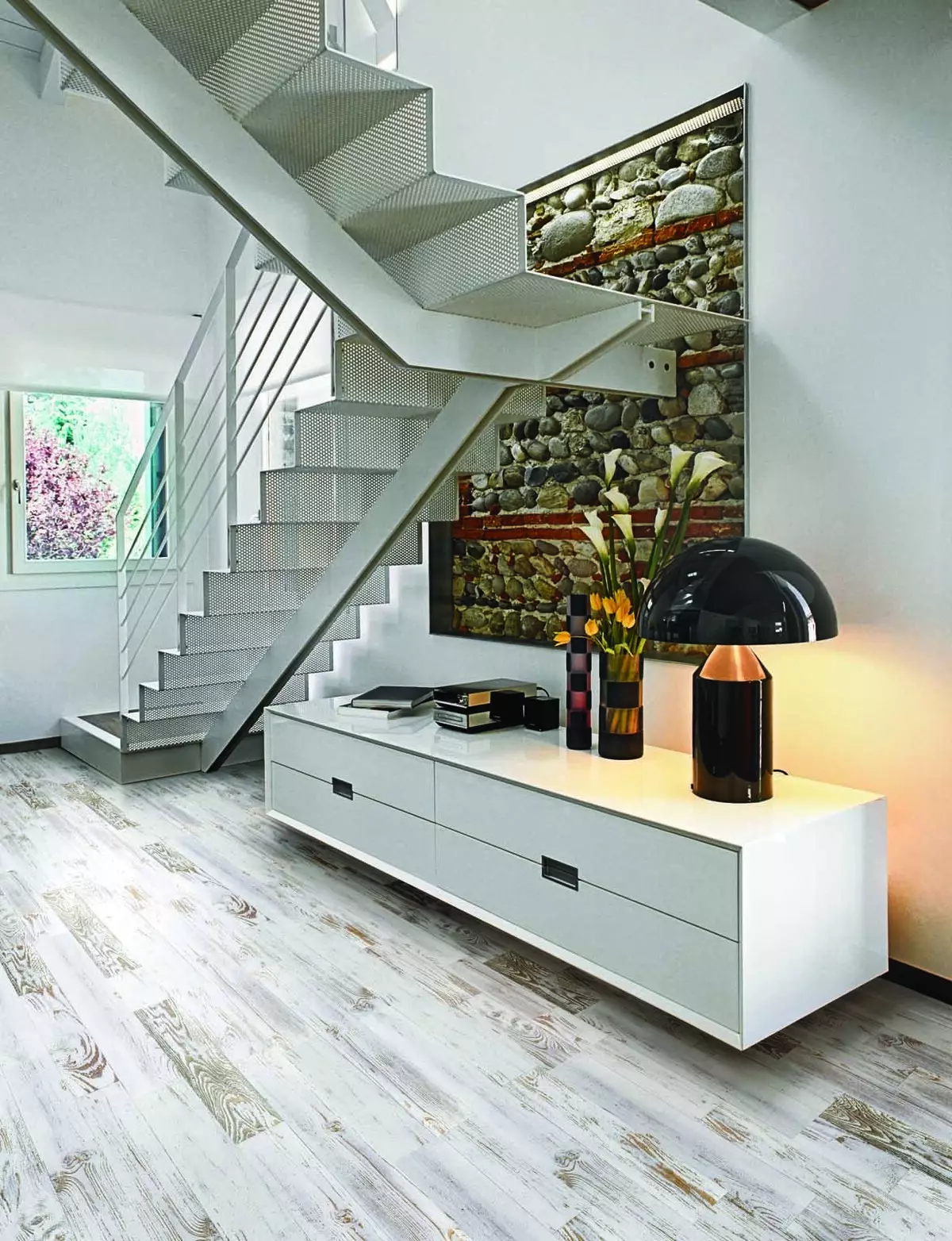
Wood Plus Parquet Board (base - HDF High density and oak veneer), LOFT collection (CorkStyle), varnish, 1230 × 200 × 9.6 mm (3030 руб. / M²). Photo: Corkstyle
Varnish or oil? What protective coating to choose parquet boards?
Each type of protective coating has its pros and cons. Thus, the oil is preferable to boards with an upper decorative layer from exotic (usually oily) wood breeds. In addition, oil coating boards are more suitable for rooms with high humidity and heated floors, where from periodic moistening and changing geometry of lacquer elements can crack and peel.
Nacre-covered boards have proven themselves in rooms where the floor is exposed to large loads, high risk of its pollution and requires special wear resistance of the coating. Such a floor is more suitable for busy people who do not have time to regularly care for the coating, as well as those who further plan to change the floor decoration on oil or wax treatment.
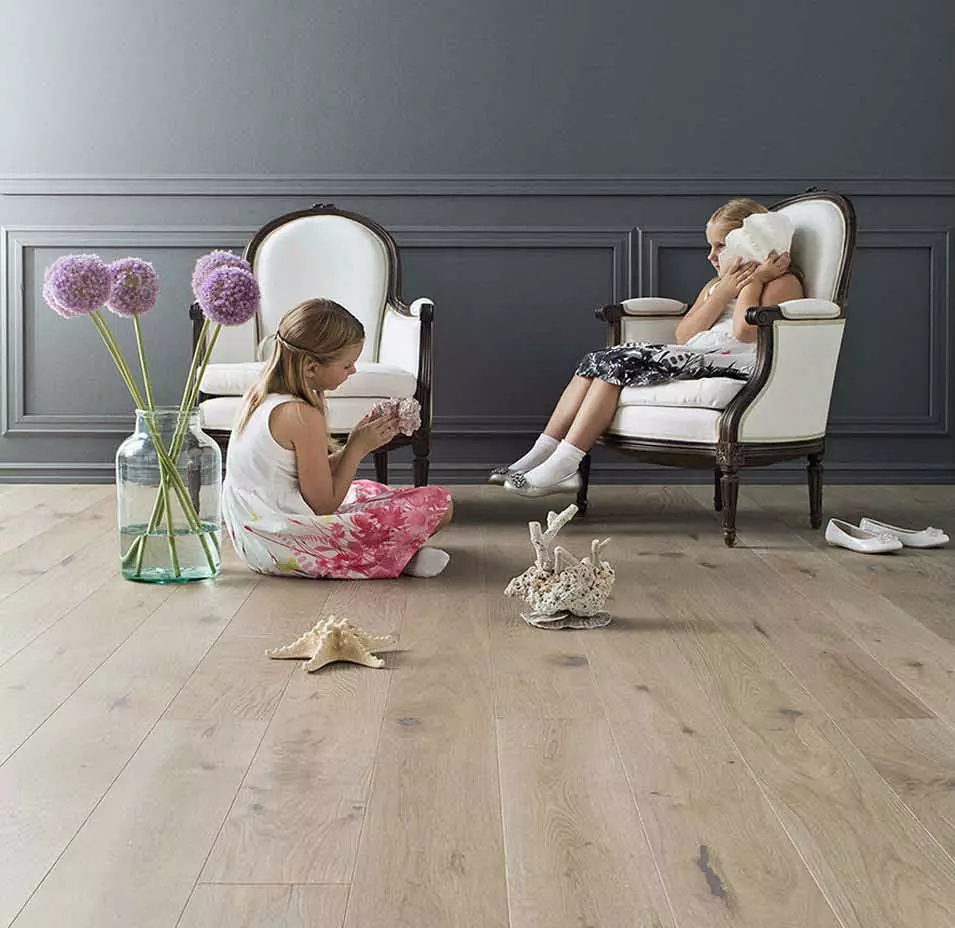
Designers often consider outdoor accessories as separate elements of the overall interior decor and choose them with a few interest rather than a floor covering. The color of the plinth can be selected in the tone wall, the floor or differ from them. At the peak of fashion, white plinths, which are ideal for both harmonious and contrasting combinations with floor trim and walls. Photo: timberwise.
What are the features of the floating method of laying boards?
The easiest and fastest way of laying parquet boards is floating, without hard fastening of elements to the base. It is economically the most profitable. Price of work for laying 1 m. Total 340-500 rubles. Moreover, you can immediately go to the floor after the end of work and install furniture. In addition, such a coating is possible to disassemble and collect anew, although most often it is required to replace spoiled boards. The maximum laying area by the floating method without the use of transitional threshings is up to 240 m. (12 x 20 m).
Experts pay attention to the fact that wood is a living material. And a parquet board laid by a floating method, despite the multilayer design, is subject to minor expansion or compression depending on the temperature and humidity in the room during the year. Therefore, throughout the perimeter of the room between the wall and the floor, the compensation gap is left from the calculation of 1.5 mm per each meter of the room length, but not less than 8-10 mm. The same rule belongs to the sites between the floor and the threshold, as well as the staircase, fireplace, stone floor or by any other rigidly fastened structures.
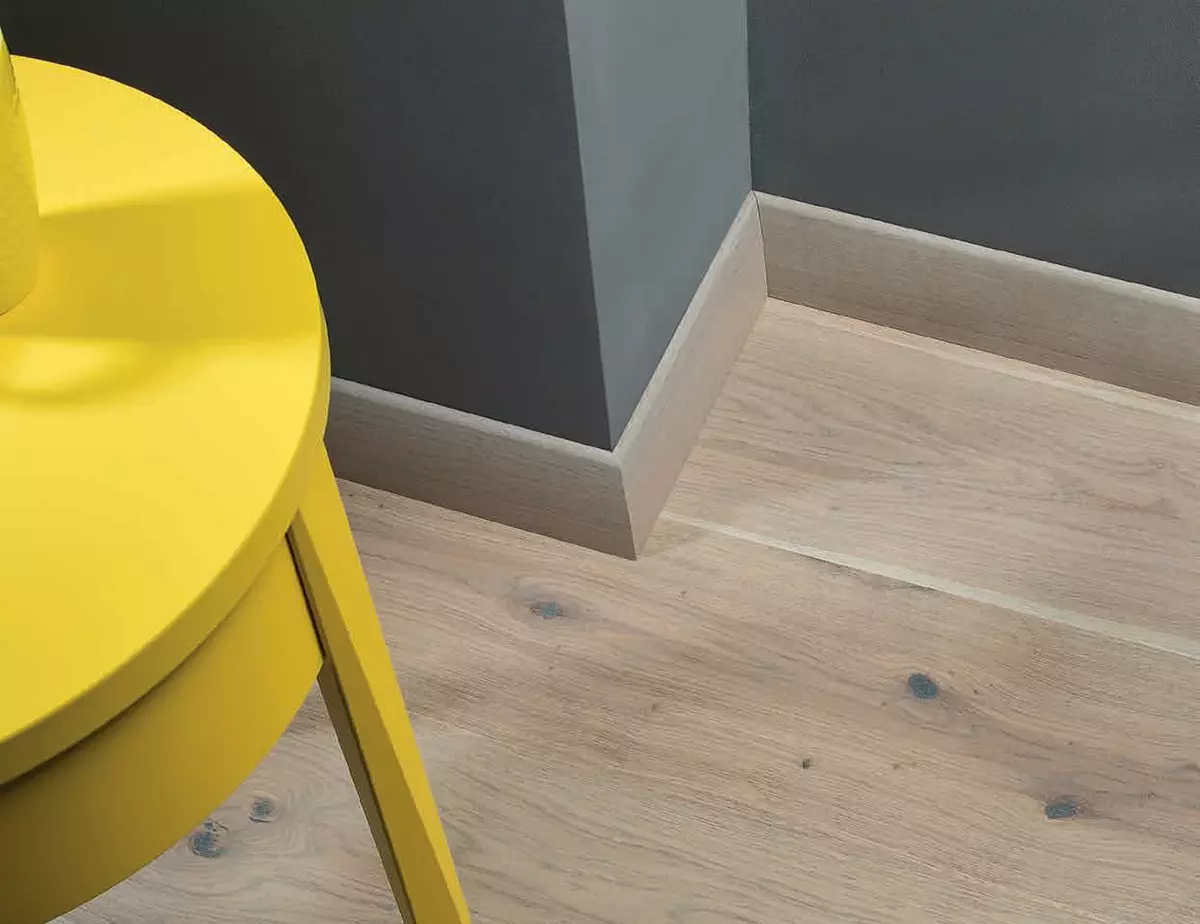
Photo: Barlinek.
In which case, it is worth choosing a glue method of floor mounting?
The adhesive way of laying, more time-consuming and costly compared to floating, is worth useing at the flooring of boards in the premises of a large area (more than 12 x 20 m), as well as if the task is to extend the service life of the coating. In this case, the lined base is usually glued to the phaneer, they are fixed with its self-draws, irregularities are grief, after which the boards are glued.
By the way, modern adhesive compositions allow the fixation of the boards directly on the aligned and primed concrete base. Paul from parquet boards laid by adhesive in the technical characteristics are not inferior to the floor from the piece parquet and is suitable for the premises of any area. It is withstanding b.lophel temperature and air humidity drops than floating. Of course, the costs of the faeer and glue, an increase in the coating time, the payment of additional work is reduced to no advantage of the parquet board - fast and inexpensive laying. But after years, the wear on the top layer of wood can be pasted and re-covered with varnish or oil.
When choosing parquet boards for the adhesive method of laying, it is worth paying attention to the thickness of the top layer of wood. It varies from 0.6 to 6 mm, and on average is 3.5-4 mm. Taking into account the upcoming grinding, choose boards with a layer thickness of at least 4 mm.
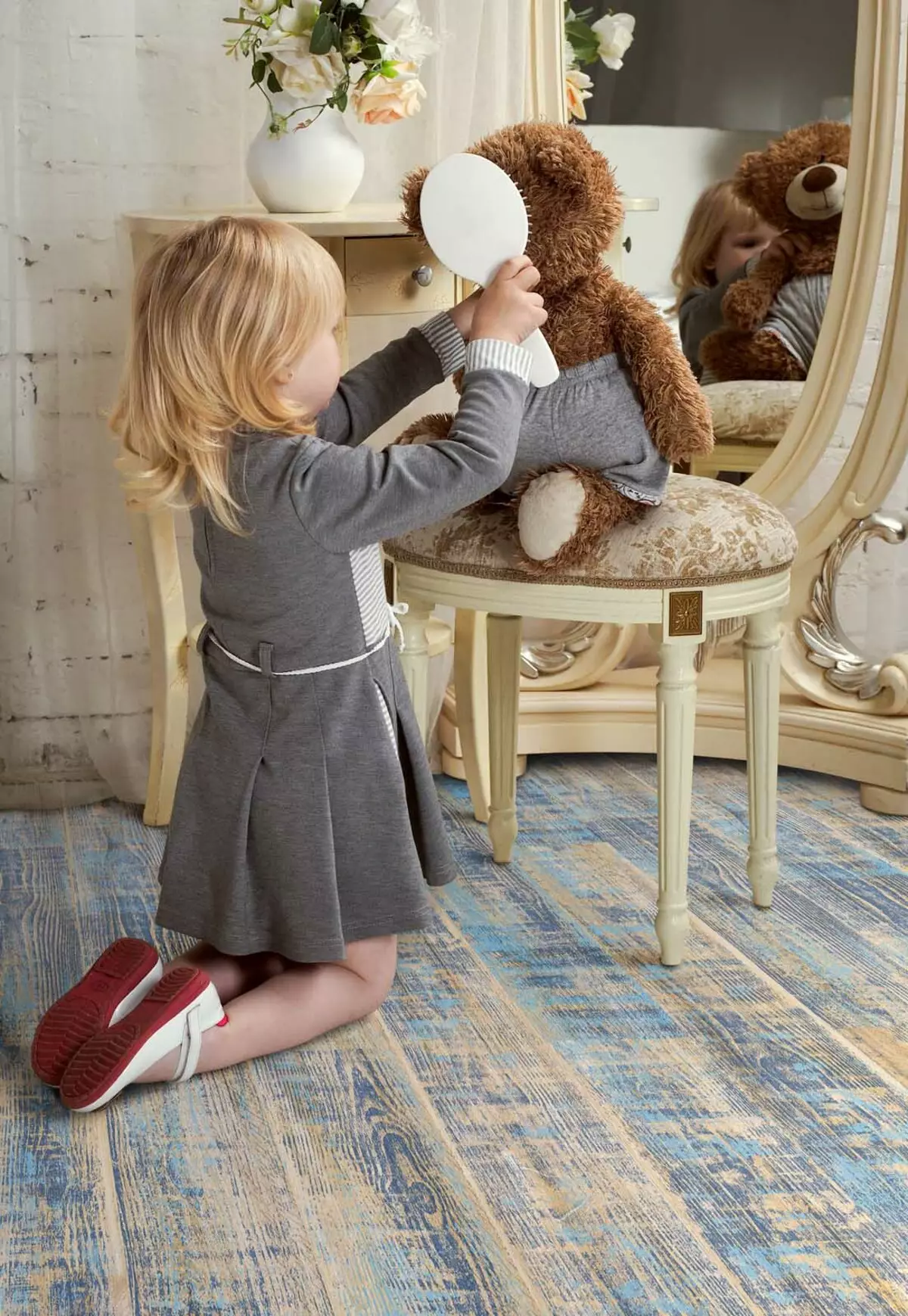
Photo: Corkstyle
Do you need a substrate under the boards that are floating in the floating way?
The substrate performs the function of the shock absorber between the boards and the base, effectively reduces and absorbs noise from walking by the floor, levels the smallest irregularities of the base (no more than 1.5-2 mm). The selection of the substrate thickness depends on the base material, the thickness of the parquet boards, the requirements for sound insulation of a particular room. But to use an overly "thick" substrate (4-5 mm) to smooth out the irregularities of the base or improve sound isolation, undesirable. In this case, when moving on the floor, the installation of heavy furniture parquet boards will strongly fade and create an additional load on the lock connection. Too thin substrate (less than 2 mm) will not provide the desired acoustic comfort.
Optimal is considered thickness from 2 to 3 mm. Some substrates have waterproof properties, such as products made of foamed polyethylene, extruded polystyrene foam. Others, for example, from wood fibers, be labeled on a waterproofing layer of polyethylene film with a thickness of at least 0.2 mm. It will protect both the substrate, and the boards from the penetration of moisture from the base.
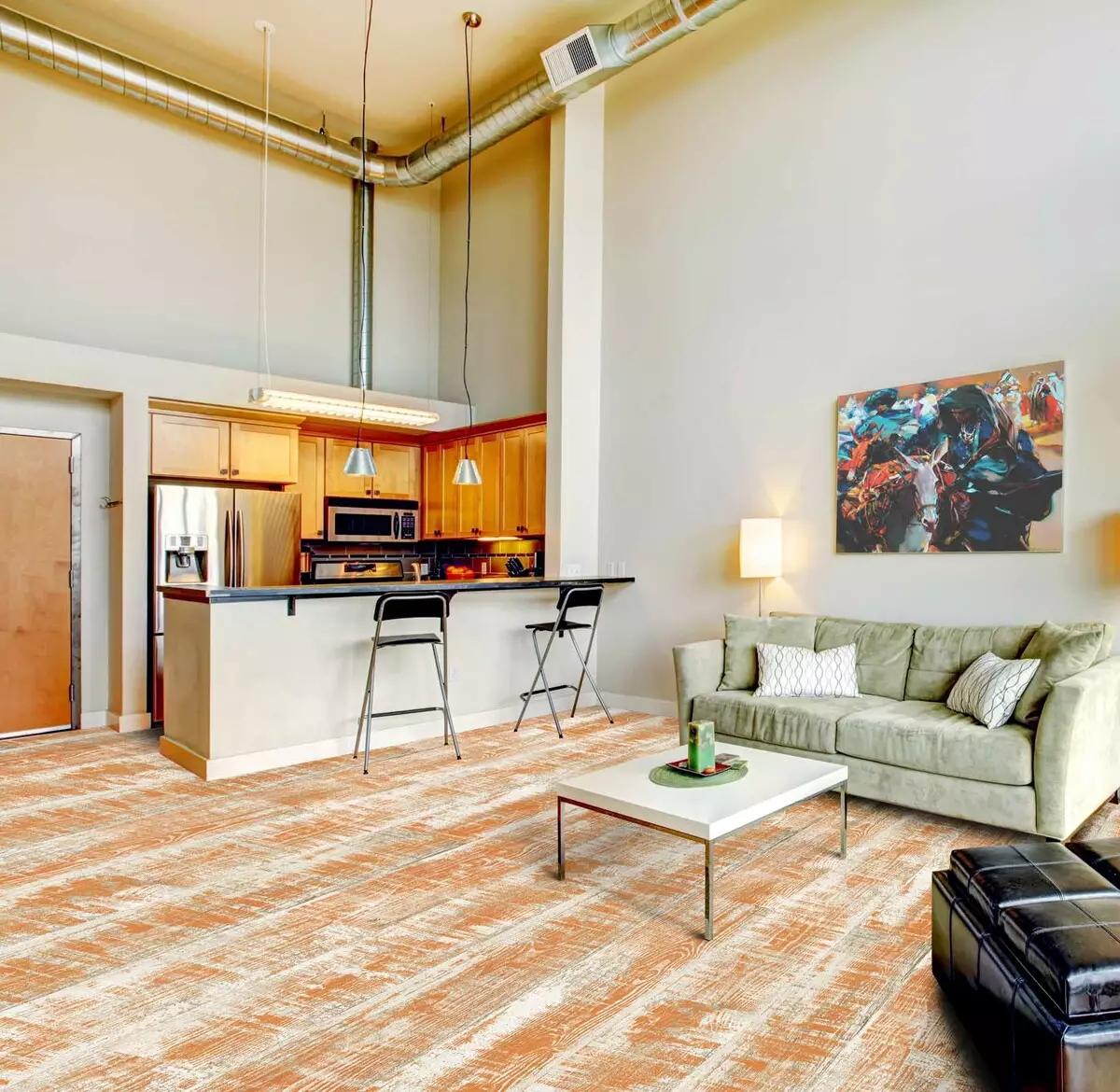
Photo: Barlinek.
What is the dispersion and what is it needed for?
The dispersion is called the displacement of the transverse joints of the boards in the neighboring rows relative to each other. This is not only aesthetic, but also the necessary technological reception. According to experts, the floor will be the most durable, if you have a dispersion of at least 50 cm. For convenience, it is usually used to shift the elements on 1/2 or 1/3 of the board length. In this case, the laying of the first row and all subsequent odd rows begin with a whole board, and the second and all are even - with half or third. Then the laying pattern will be neat and symmetrical.However, the offset can be chaotic. The main thing in this case is to withstand the same offset interval (at least 50 cm) relative to the previous series, so that the joints of the boards of different rows are on one line or close from each other.
How not to damage parquet boards during transportation?
Factory packaging of parquet boards helps to keep them during transportation and storage. By purchasing flooring or taking material on the object, check its integrity. Before laying the board store in a closed room, while maintaining the integrity of the packages and exclude possible contacts with a wet base. Air humidity All this time must be in the range of 30-50%, and the temperature does not descend below 16 Å. To avoid mechanical damage to the edges of the elements, do not install the packaging on the edge or vertically on the short end.
At what stage of repair should lay parquet boards?
Parquet boards are laid after the completion of all works associated with the release of excessive moisture (plastering, shtcocking, etc.). To this course, moisture in the premises should normalize and stabilize at no more than 60%.Note: In the case of arrangement of a new concrete screed, a lot of time will be required before the moisture content in it decreases to permissible limits and it will be possible to start laying parquet boards. Judge for yourself: to dry out each centimeter screed (with a thickness of 6 cm) it takes a half weeks. And for the complete drying of each subsequent centimeter, over 6 cm, the thickness of the screed is needed 4 weeks.
Is it possible to lay parquet boards on a warm floor?
Those who decided to select parquet boards on the "Warm Paul" system should carefully take advantage of the choice of wood of the upper layer. Better than others will behave on the heated semi stable wood species: oak or tick, and a change sensitive temperature and humidity, such as beech or male, are not suitable for this case. By choosing the adhesive method of laying boards, make sure that the glue retains its properties and elasticity for many years with notable fluctuations in temperature. Observe the recommendations of the manufacturer of a wooden floor covering, among which is a uniform heat distribution throughout the floor and the strictest prohibition on the temperature increase on its surface more than 27 ° C. With outdoor heating rooms, the rooms are unwanted under the feet of carpets and mats, while the installed furniture necessarily should have legs.

The floor from the parquet boards with a chamfer is first cleaned with a vacuum cleaner, and then wipe well with a well-pressed cloth, following the water to accumulate in the recesses. Use only soft detergents for wooden floors (pH 5.5-6.0). Aggressive tools can remove the protective layer of varnish or oil-wax from the surface of the boards.
Methods of surface treatment
Braching
This is a special processing of the top layer of wood with special brushes (metal or plastic), at which the upper, soft fibers of the tree are removed. Braching exhibits and emphasizes the structure of the tree, and scratches and chips on the structured surface of the parquet boards become less noticeable than on smooth.CHAMFER
This is a small inclined section at an angle of 30ÅÃ (width of 0.1-1.5 mm), which can be made on the longitudinal, end sides of the top layer of the parquet board or throughout its perimeter. Boards with a chamfer are more clearly released on the floor surface, but at the same time small slots between boards that can appear due to seasonal moisture oscillations become less noticeable. In addition, the chamfer prevents the formation of wood chips around the perimeter of boards during laying and operation.
Toning
This coloring of the surface of the boards in order to revive or change the natural color of wood. Unusual decorative effects can be obtained by applying several ways to process the surface of the board at the same time. The bright result of combining brash and toning is elements with a dark base and a contrast and white wood pattern.Three sizes of one plinth
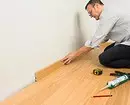
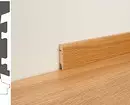
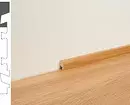
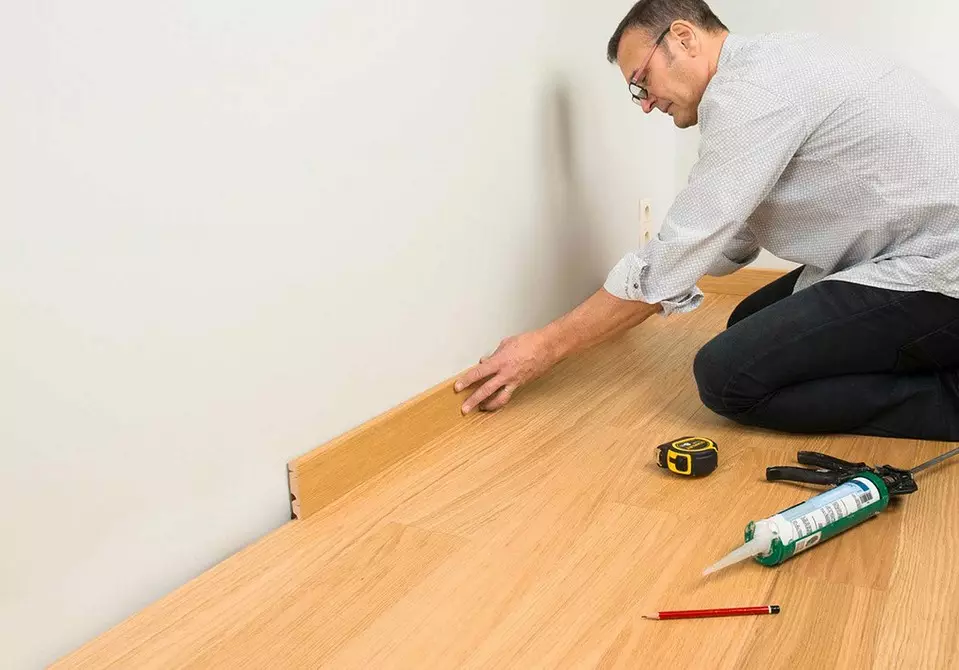
Disguise the technological gap between the floor covering and the wall, as well as hide the electric wires, telephone and television cables will help a special plinth with a PAR-KY cable size of 2150 × 80 × 14 mm. Photo: Par-Ky
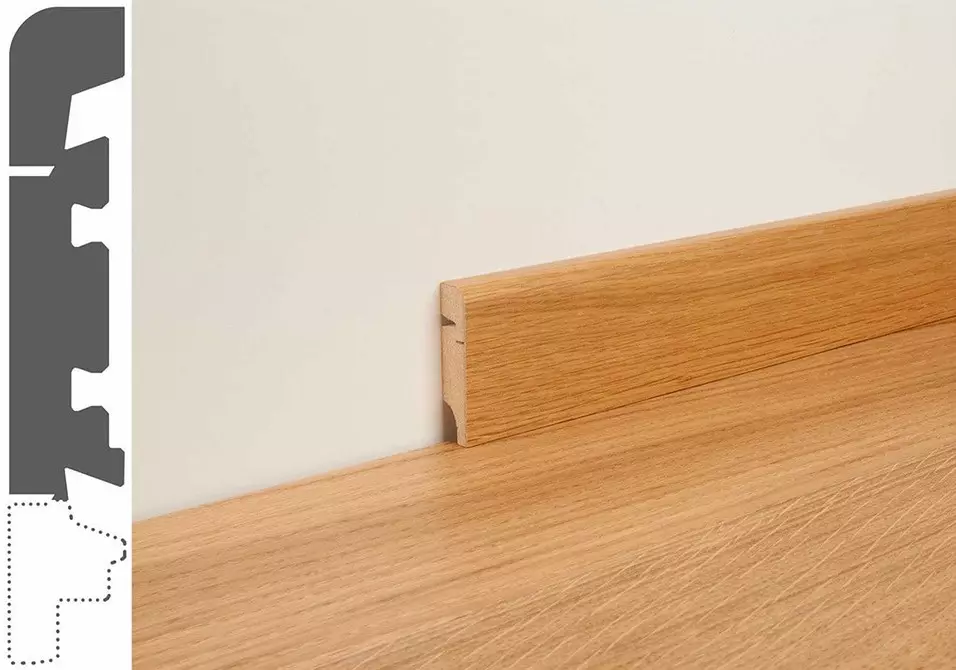
If necessary, it is easy to shorten up to 60 mm or 25 mm using a knife. Photo: Par-Ky
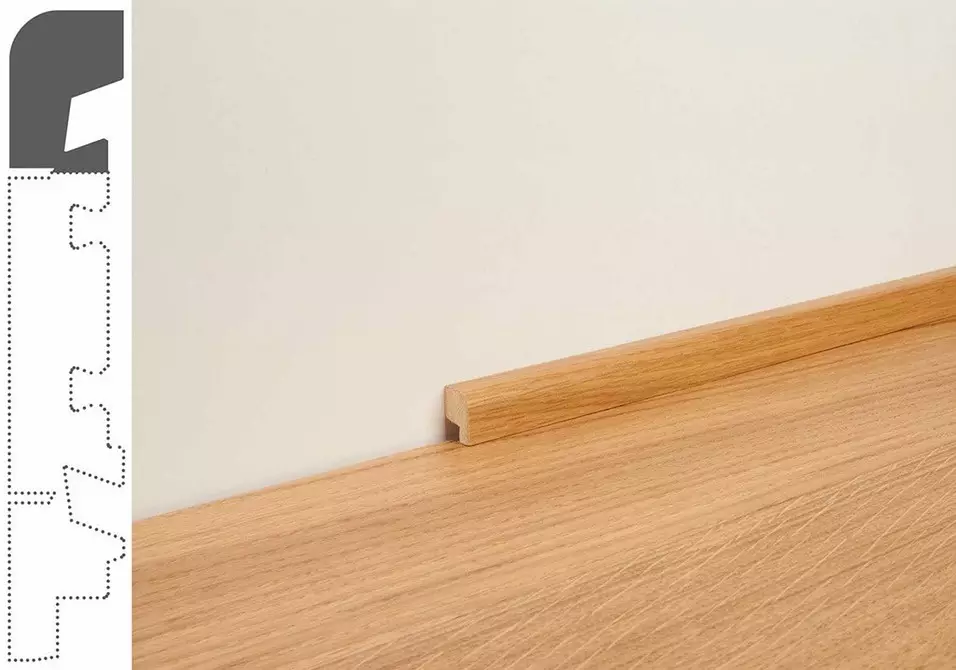
For trimming to the desired height, it is enough to hold a knife along the grooves applied by the manufacturer. Remember that when a floating method of laying parquet boards, the plinths and threshings must be fixed so that the floor design remains floating. Photo: Par-Ky



